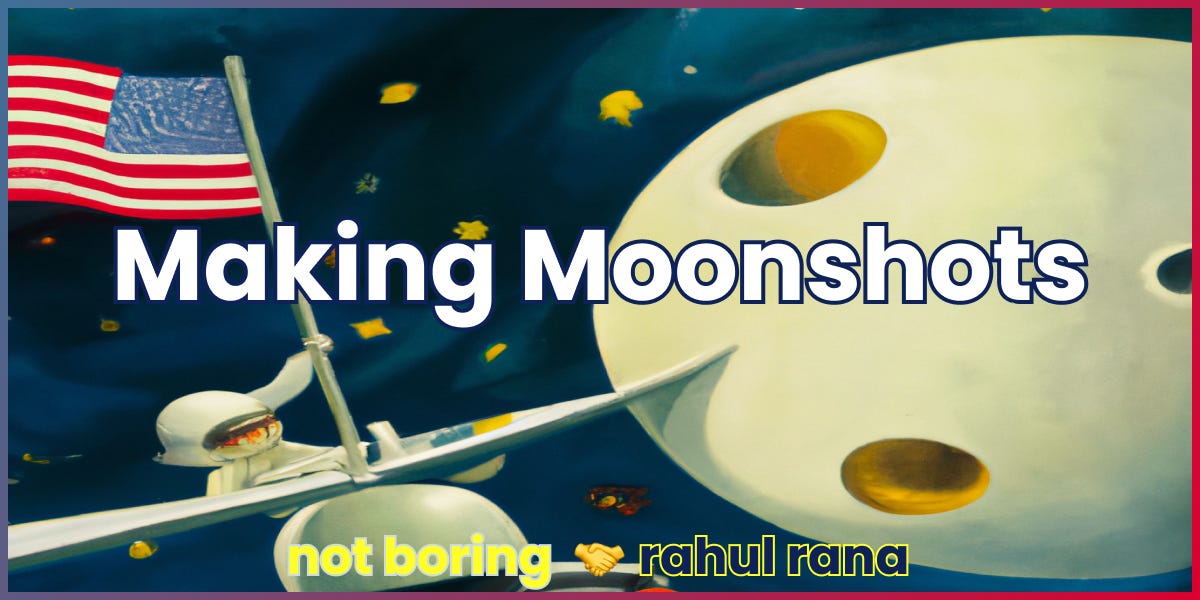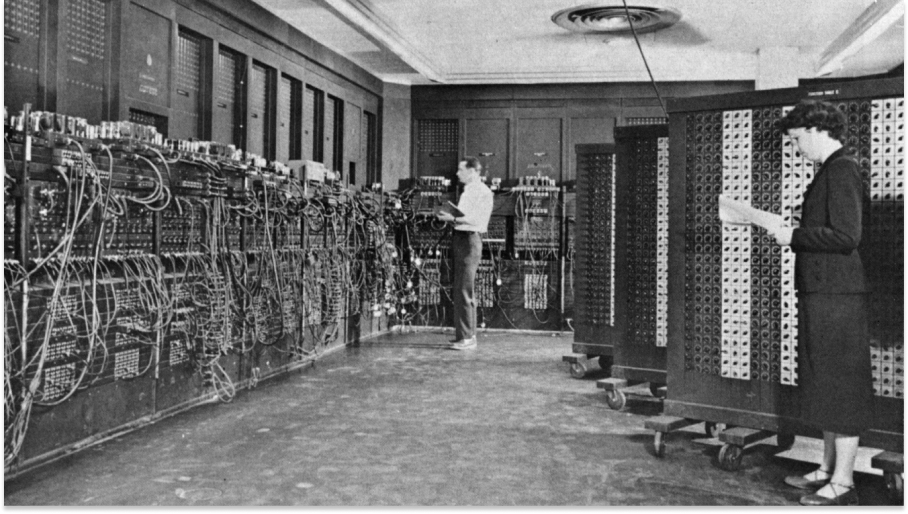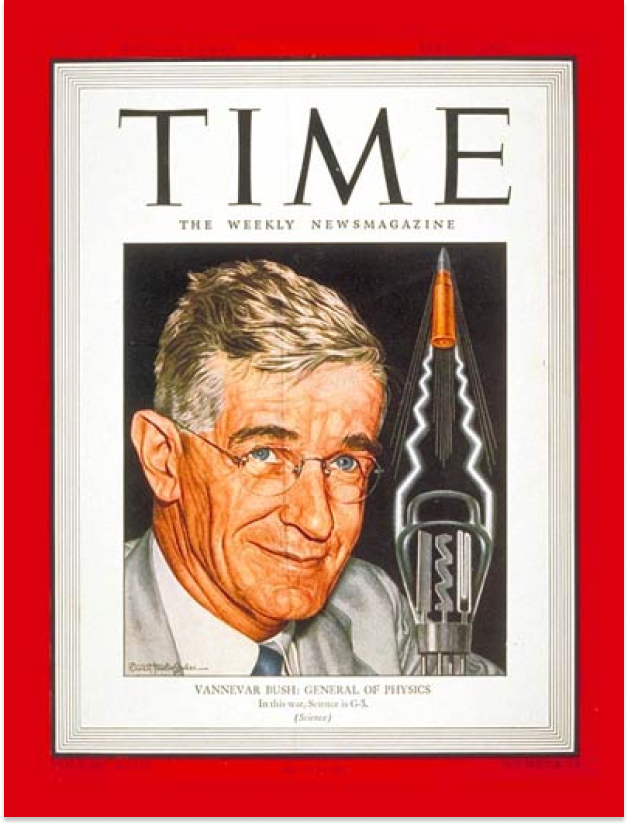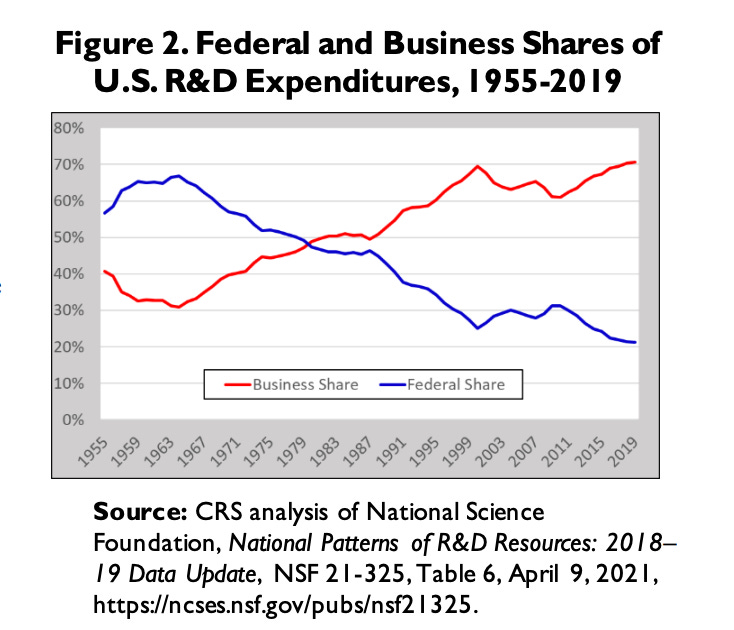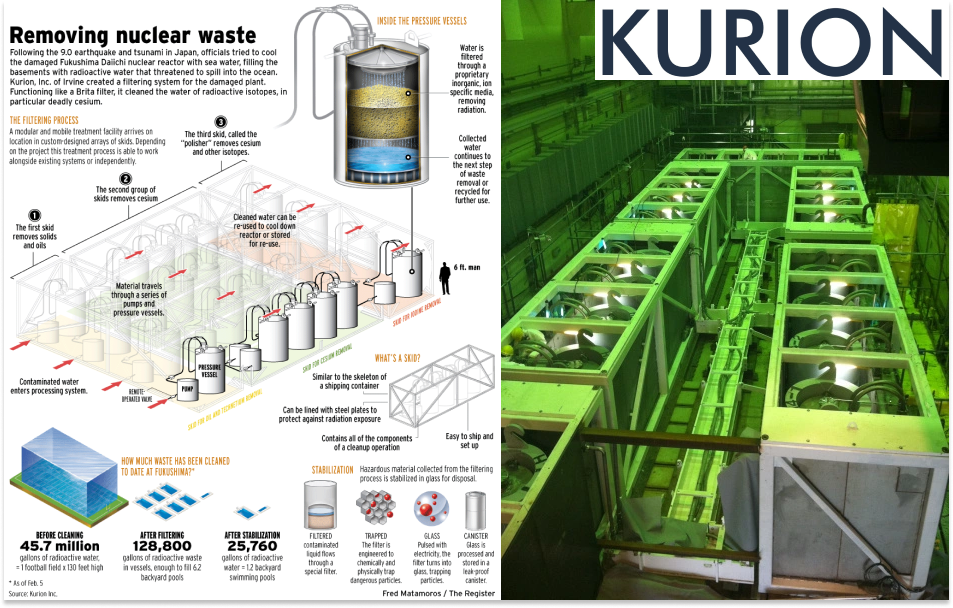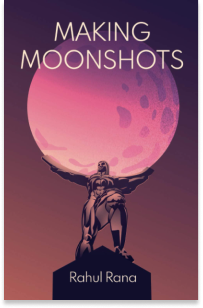Not Boring by Packy McCormick - Making Moonshots
Welcome to the 1,812 newly Not Boring people who have joined us since Thursday! If you haven’t subscribed, join 13,138 smart, curious folks by subscribing here: Today’s Not Boring is brought to you by… FTX US If you’ve been following crypto at all over the past year, or if you listen to Not Boring Founders, you know FTX US. If you’ve really been keeping up, you may have even seen its recent acquisition (pending approval) of Not Boring Capital portfolio company Embed. As the crypto markets have tumbled, FTX has gotten stronger. The Economist recently called FTX founder Sam Bankman-Fried (SBF) “Crypto’s Last Man Standing.” Its strength comes from its best-in-class products. Simply put, the FTX App is one of the most complete apps in investing, and its trading platform has the best liquidity and lowest fees in the industry. With the FTX App, you can trade crypto & NFTs with up to 85% lower fees than any other exchange on the market. And now - you can trade stocks with no fees, all right where you trade crypto. FTX is eating the financial markets. To get started on a safe, accessible, and liquid investing platform, download the FTX App on your phone or, for a more advanced experience, try the newly redesigned FTX US web app. Make sure to use the code NOTBORING; new users will get $10 when you make your first trade over $100. Hi friends 👋, Happy Thursday! I hope those of you in the US had a great 4th of July weekend, and that the rest of you enjoyed a peaceful extra day away from your American colleagues. I thought the patriotic holiday would be the perfect time to look at the history and future of deeptech innovation in the United States. I believe that after two decades of pure software (bits) dominating the startup landscape, we’re entering a golden age for atoms. Today, Not Boring Research Analyst Rahul Rana is going to explain what’s driving that, which categories are most promising, and why we need more moonshots. A few weeks ago, I introduced you to Elliot Hershberg, our Research Analyst focused on biotech, when he wrote about Ginkgo Bioworks. I told you that I’d introduce you to Rahul soon. Today is that day. Rahul is a force. A rising senior double-majoring in finance and astrophysics, Rahul spent a year interning at Lux Capital followed by many months building Arcadia Science while in school and writing a book, Making Moonshots. This summer, in addition to joining Not Boring to focus on deeptech, Rahul is interning at the $84 billion growth giant, General Atlantic. From working with the best investors in the space, and literally writing the book on the subject, Rahul has a deep understanding of what it takes to make moonshots. Let’s get to it. Making MoonshotsPart 1: Schemes of Cosmic MagnitudeAfter decades of government-led scientific progress, the time has come for deeptech startups to lead the charge. These startups will lean on academic research and governments, tapping into their vast budgets and real needs. But the pieces are in place for deeptech startups to drive the innovation agenda. My thesis: deeptech startups are just as important as academia to scientific progress. Research offers the foundational knowledge that startups scale to the general public. We need both—academia and industry—there’s no question about it. But tracing back to World War II, one of the most significant turning points in American ingenuity, public funding and direction were practically required for large-scale scientific progress. Today, America needs to lean on its competitive advantage–bottoms-up innovation–to win the next century. For the past 70 years, when it came to deeptech and scientific progress, the government led, and then handed off to the public sector to commercialize technology beyond military applications. The Manhattan Project, for example, directly created the atomic bomb and indirectly unlocked insights that made nuclear power possible. Today, nuclear is a crucial element of energy abundance and a potent weapon in the fight against climate change. Ironically, the atomic bomb could help save or destroy the planet. Military R&D around nuclear physics also advanced our understanding of biology with the popularization of radioisotopes as treatments for cancer, diagnostics, and tools for understanding metabolic pathways. War efforts even birthed the first general-purpose computer, the ENIAC, by way of cryptography used to decipher German military codes. The War sparked a period known as the Era of Big Science, characterized by large-scale projects usually funded by national governments or groups of governments. At the time, over a decade before Arthur Rock wrote a venture check into Fairchild Semiconductor, federal, top-down coordination and money were necessary for the sheer scale of the projects at hand. Without the government’s direct intervention, we probably would not have been able to fight the AIDS epidemic, rally against cancer, lay the beginnings of the internet, or even discover fundamental concepts of biology, chemistry, and physics—such as the discovery of the DNA double helix, MRI machines, and the bulk of modern astrophysics. These giant leaps in science trace back to one hero: Vannevar Bush. As the globe marched toward inevitable world war, it was clear to him that the military technology of the past would be rendered obsolete by the enemy’s arsenal. Science had a vital role to play in turning the tide of the war toward the Allied Powers, but understanding that wasn’t intuitive to the government at the time. Enter Bush: a professor at MIT and inventor of the differential analyzer, one of the first operational computing mechanisms. Bush was an ardent proponent of deeptech as a means of winning the war because he saw first-hand the shortcomings of government and academic research after WWI as the Dean of Engineering and VP of MIT. Before Germany invaded Poland, he left his post to establish a national emphasis on research in Washington, DC as the Director of the National Advisory Committee on Aeronautics. After the invasion, the urgency of his mission became more apparent. Bush took on the prodigious task of convincing President Franklin Delano Roosevelt to invest in science, not just weapons of mass destruction, but the endless frontier that would hold the keys to a sustainable victory. Surprisingly, it worked. In 1940, the National Defense Research Committee was created to boost defense industries. About a year later, Bush chaired the Office of Scientific Research and Development. Under his leadership, fundamental research took place around things we now take for granted: rocketry, radar, sonar, and more. As the War ended, Roosevelt consulted Bush about what the country should do to take full advantage of the industrial complex built up in support of the military effort. “There is,” the President wrote, “no reason why the lessons to be found in this experiment cannot be profitably employed in times of peace.” You can find President Roosevelt’s famed letter here. In summary, he asked Bush four questions:
Bush replied with his renowned Science, the Endless Frontier essay, which laid out his proposed solutions. In summary: invest in science and take out the economic and structural riskiness in pursuing R&D breakthroughs while ensuring the well-being of these pioneers, revitalizing research culture, and developing talent. He declared that “science can be effective in the national welfare only as a member of a team, whether the conditions be peace or war. But without scientific progress no amount of achievement in other directions can insure our health, prosperity, and security as a nation in the modern world.” It was simple. An enduring civilization was nothing without advances in how it gets things done. Stagnation meant death. Bush’s objectives were reminiscent of American policy more broadly. Historically, it has been the purview of the government to tackle new frontiers—the West, then Alaska, then outer space. The same goes for technological progress. Over the years, the government established generational institutions such as NASA, DARPA, and ARPA-E to solve formidable problems and make discoveries. They also established a plethora of bureaucratic funding mechanisms that award the most innovative projects: Small Business Innovation Research (SBIR), National Science Foundation (NSF), and many others. Executive branch departments and entire university systems uphold the same goals. By the 1960s, the military-industrial complex became the scientific-industrial complex as US military-funded R&D came to represent 30% of all R&D worldwide. The military provided 50% of all university R&D dollars and 25% of corporate R&D dollars. However, this trend started flipping in the 70s and 80s. Government legislation, such as the 1980 Bayh-Dole Act, which formed patent protection for publicly-funded research, allowed the commercialization of the vast pool of scientific and technological knowledge we had accumulated over the previous four decades. As a result, the productivity of private enterprises outpaced that of federally-funded research as a percentage of GDP. This shift fueled a culture war between private and public R&D. In 1983, following the Bell System Divestiture, employees of Bell Labs encapsulated this sentiment in a quote:
Despite the government’s attempts to tell the commercial sector “how to run its business,” regulations could not stop the march of commercial American dynamism. Privately owned deeptech companies could bring their learnings from lab to market. Teledyne, Genentech, Intel, and Apple were born during this initial wave, launching a new era of progress. Inspirational stories of scientists unintentionally making ground-breaking realizations became those of founders risk-taking their way into ambitious startups. It's popular to point out that America doesn't build like we used to—during WW2, the Space Race, or even the 1970s, when Apple and Genentech were both founded in the year of our nation's Bicentennial. Something happened around 1973; progress slowed. We lost our ambition. As Jeff Hammerbacher complained, "the best minds of my generation are thinking about how to make people click ads." I’d argue that it was because we saw a divergence in private-public collaboration as the government focused on other domestic issues. Neil deGrasse Tyson says it best in his 2012 speech, We Stopped Dreaming:  But that narrative is stale. The dreaming is here; it’s just not evenly distributed. Today, a new wave of truly awe-inspiring companies are pushing the frontiers of what’s possible. The argument that capital markets lack the incentive to pursue scientific risk is a fallacy: commercial space companies are researching and productizing 3-D printed rockets and space infrastructure (Relativity Space); biotech startups are discovering drugs and building scalable platforms to expedite the process (Enveda Biosciences); energy ventures are profitably fighting climate change (Tesla). These are just a few areas where societal progress is led by private industry - deeptech companies across the spectrum are taking on society's toughest challenges. Scientific progress is now distributed amongst thousands of venture-backed entrepreneurial scientists that are collectively iterating and advancing their fields in a financially sustainable way. When thinking about how science was and is done in the USA, the overall trend follows a yin-and-yang relationship between public and private R&D. However, given the current state of the nation, only cohesive collaboration between public and private will lead to the outcomes we need. We need more people to start dreaming again. We need more startups that solve seemingly impossible problems and change the course of history—those that have “schemes of cosmic magnitude.” One more successful moonshot has the potential to drastically reduce any aspect of human suffering and pull us out of the stagnation we face. One more moonshot can push the course of technological progress and societal progress, in turn bringing forth a new golden age. A movement starts with one. When something previously thought of as inconceivable becomes a reality, it spurs action at the individual and collective levels. New companies build off of the prior generation’s innovations, widening the scope of who can create deeptech companies. Innovation becomes infrastructure, infrastructure becomes a launch pad. From geeks to polymaths, everyone has an essential role in invention and innovation. We need moonshots. Part 2: To The MoonWe need more moonshot companies: bold startups that leverage a frontier technology or science to solve an exigent problem in the world. Not another ad optimization tool. Or yet another zero-utility NFT project. I’m talking about those like Moderna, which is containing an entire pandemic with RNA vaccines, or Commonwealth Fusion, which is commercializing fusion energy. The term “Moonshot” was born out of the Apollo Missions, specifically Apollo 11, which put the first man on the Moon in 1969¹. I know Packy has shared the famous JFK “We Choose to Go to the Moon” speech before, but I’m going to share it again. Watch it.  I love the Apollo story because of what happened at the nexus of two branches. One branch was the private-public sector collaboration between NASA and universities, namely MIT. The second one starts with Nobel Prize winner William Shockley of Bell Labs, who invented the transistor in 1947 and founded Shockley Semiconductor in 1955. As a key figure within the computing industry, Shockley was widely known and attracted incredible talent, but his bitter management style turned off some of the scientists he hired. There were seven notable ones. Enter Arthur Rock, the legendary godfather of Silicon Valley. Rock serendipitously met some of those scientists disheartened by Shockley’s leadership. Instead of getting them hired at another firm, he pushed them to start their own company. The group of seven added one more scientist as per a recommendation from Rock and accordingly became “The Traitorous Eight.” Their company agreed with the existing Fairchild Camera and Instrument to establish a semiconductor arm, which became Fairchild Semiconductor. An industry giant was born. Now, the two branches link together, as publicly-funded NASA and MIT needed advanced computing measures for their systems—specifically integrated circuits. The Apollo Missions became one of privately-funded Fairchild Semiconductor’s most important early customers, despite its technology being extremely novel and untested on a massive scale. NASA provided a much-needed stress test for Fairchild, as integrated circuits were painfully quality-tested. They needed to be perfect. The weight of the Apollo missions rested on Fairchild’s technology. It was a daunting task. But, as (almost) always, innovation pulled through. NASA and MIT asked, and Fairchild executed, making chips that skyrocketed computing power, reliability, and memory by nearly 1,000 times. To articulate the new trend Fairchild kicked off, Intel co-founder Gordon Moore, the theorist behind Moore’s Law, coined the exponential concept explicitly based on NASA’s operations. It was the perfect environment to study the rise of computational power in a real-world setting. The rest is history. Apollo 11 was a success. The US—its government, institutions, and private companies—completed the first moonshot: a crewed lunar landing that returned to earth. The impossible was impossible no more. Fairchild Semiconductor went on to become a generational company whose employees went on to continue the legacy by founding companies like Intel and AMD. That’s not all. One of the most powerful consequences of the Apollo Missions was their effect on regular people. NASA’s founding and space-related efforts were driven out of fear of Russia’s progress toward the moon. Yet, JFK masterfully channeled this through his famous Moon Speech in a way that galvanized the general public to support the lofty goal and dream of the future that they could participate in. People wanted to become scientists and engineers. People wanted economic and social progress. It was the mindset that the space program brought upon us—this feeling of dynamic, cautious optimism—that likely changed the entrepreneurship landscape in America. The imaginative and ambitious startup culture, the cutting-edge breakthroughs, and the resounding, captivating impact of it all—that is what a moonshot is. Today, a new generation of moonshot companies share the same ethos, but the process has changed. Private companies identify opportunities, marry them with applications of cutting-edge research, and then sell to the government and industry. They take risks and build defensible companies, not because they are easy, but because they are hard. Take Kurion, a nuclear waste management company founded in 2008 by Gaetan Bonhomme, John Raymont, and Josh Wolfe. When everyone was chasing solar energy, ethanol, and biofuels, the team looked toward advancements in energy that no one was looking at—nuclear power. The team considered the ever-increasing world population and economic growth, which foretold an inevitable increase in demand for energy. They asked, “What sources of energy would people realistically use in the future, how could we contribute to more available, less expensive options, and where is there an opportunity to build a profitable business?” Expert interviews, scientific research, and intelligence reports pointed to harnessing nuclear energy. Yet, they realized that the waste created as a byproduct of nuclear operations, whether bomb-making or reactors, was holding the industry back. What do we do with the waste? How can we clean it up? What if another Chernobyl happened? Wolfe found that “$1 of every $4 spent by the US Department of Energy spent wasn’t on ‘green tech’ but nuclear waste cleanup—$6 billion a year,” and that “such cleanups could take 50 years or more to complete.” At the time, it cost tens of billions of dollars to properly clean up and dispose of nuclear waste, and it was found that “hundreds of billions of dollars will be spent globally for decades to come” if nuclear waste management was not solved. With that in mind, Kurion invented a vitrification process to lower the lifecycle cost of nuclear waste management by isolating the radioactive components of the remains and encasing it in a stable formation of geological glass. Then, Kurion got its big break—a total black swan event. March 11, 2011. A 9.0 magnitude undersea earthquake shocked Japan and generated a massive tsunami that obliterated the Japanese shore. Homes, businesses, roads, and more were wiped out, and to make matters worse, the power supply and cooling systems of the Fukushima Daiichi nuclear power plant were disabled. No one had seen it coming; most could only look on in horror. Kurion was prepared. It was one of a few companies selected to collaborate with various governments and help contain the waste. In little time, they successfully designed, built, and delivered their technology to remove 68 million gallons of radioactive waste at a fraction of the previously perceived cost. It was a win for progress and a saving grace for people in Japan. Kurion is a story of defying the odds and fundamentally pushing forward our understanding of chemistry and physics. All done by a team of entrepreneurs, bottoms-up. It would have been too late if the team had waited for the government to demand a solution. Ideate, innovate, then sell. In the end, Kurion was acquired for $350 million in 2016. We chase moonshots because they fix inefficiencies, drive progress, and make money. They're still businesses; both the technology and the economics need to work. But, the seemingly impossible journey and real-world impact of it all is what makes them worthy of the lunar metaphor. I can keep going. Imagine devoting your life’s work to unearthing a fairly complex concept within neuroscience and even getting a principle named after you, then having that work almost entirely invalidated by a newcomer to the space. That sucks. This is exactly what happened to neurophysiologist Elwood Henneman. The Henneman Size Principle states that in motor recruitment, the neurons that control muscles act in groups according to the magnitude of the force needed for an action. Essentially, it was believed you could not turn individual neurons on or off, that you can only fire off a group of them with the number determined by a movement’s strength. Founder Thomas Reardon and his team at CTRL Labs disproved that principle by building a noninvasive hardware solution that connects one’s nervous system to a computer or machine—effectively allowing a user to control the machine with an intent to act. Upon isolating each fired neuron, the signal that would go to a muscle can be translated and expressed on a brain-computer interface. Yes, CTRL Labs made mind-control a reality. Think of the Force in Star Wars. By merely thinking about a certain action, those who can wield the Force can control an external entity—whether it’s an object or an entire person. Reardon figured out a way to “escape the boundaries of your body” by fundamentally granting a user more control over their life. His motivation?
While he wants to prove the “impossible” is possible and build a high-leverage project, Reardon’s motivating force is giving people autonomy. That’s quite fitting, considering that he made Internet Explorer in the 1990s. He knows how to impact and empower a billion people—in typical moonshot fashion. It’s also worth noting that only four years after its founding in 2015, Facebook acquired CTRL Labs for $1 billion. In the 2021 event, The Metaverse And How We’ll Build It Together, the rechristened Meta showed off CTRL-Lab’s tech in the section titled “What will it take to make the Metaverse feel real?” With Meta’s nearly 3 billion monthly active users, Reardon is nearly halfway to his goal of reaching everybody on the planet. These modern moonshot institutions aren’t some elusive, once-in-a-lifetime, government-resource-scale thing. They’re tough, and they often fail, but any such company can cause a paradigm shift in scientific understanding, actualize the potential to benefit billions, and monetize the breakthrough. Part 3: How to Make a MoonshotI wrote my book, Making Moonshots, to understand the mindsets, philosophies, strategies, and ecosystems conducive to building such ambitious, world-changing companies. My goal was and remains simple: to inspire at least one more person to take on such a venture. This has been a passion of mine for years as I grew up with two core influences. My father is an engineer who has worked at the historic Bell Labs my entire life, and my mother is a survivor of 9/11 as she worked in the Twin Towers during that event (the North Tower to be specific). With those dual influences, I grew up wanting to use science and tech to do good for our country and the world. My book is a manifesto for that.
In writing the book, I learned some useful lessons for people who are founding and funding frontier tech and hard sciences ventures. First, I explored common characteristics among moonshot founders. Moonshot founders are radically creative. They balance inner contradictions, which F. Scott Fitzgerald encapsulated in his quote: “The test of a first-rate intelligence is the ability to hold two opposed ideas in mind at the same time and still retain the ability to function.” These founders are cautiously optimistic and realistically unrealistic. They are passionately dispassionate, responsibly irresponsible, and pragmatically impractical. Interestingly enough, Mihaly Csikszentmihalyi, famed psychologist of the theory of the “flow state,” described creative people in his book Creativity: Flow and the Psychology of Discovery and Invention as those who are energetic yet calm; wise yet naive; playful yet disciplined; extroverted yet introverted; humble yet proud; traditional & conservative yet rebellious & iconoclastic. Csikszentmihalyi narrowed his research down to those ten traits from a sample of nearly 100 people legendary in their respective fields—including fourteen Nobel Prize winners, musicians, mathematicians, economists, paleontologists, and many more. There is an uncanny resemblance between his findings and my own. Moonshot founders, at their core, are audacious creatives. They think independently and in exponential cadences, imaginatively and in crystal-clear execution. Second, I explored key philosophies that most, if not all, of the founders I spoke to share. Most agree that there is a moral imperative to make moonshots. They are personally fulfilled by their missions and antifragile against failures. They employ mental models such as first principles thinking, second-order thinking, and systems thinking. Take Lilac Solutions, which realized that increasing lithium supply and mining rare earth metals sustainably allows EV manufacturers to build better batteries and thus electrify automobiles to mitigate climate change—a bottoms-up, first-principles-driven mission. When asked why he’s working on a battery supply chain company, founder David Snydacker said,
He’s doing it because it is necessary to the grand scheme of things. Or Deepmind, an R&D lab that builds safe artificial intelligence systems. They know that AI, if used properly, can solve the grand protein folding problem (AlphaFold) and diagnose diseases faster than ever, which can revolutionize drug discovery and bioinformatics as we know it (second-order thinking). But, they also know that AI can be used negatively for social problems such as algorithmic biases to national security and bioterrorism (systems thinking). Ultimately, moonshot founders are wise. They know that frontier tech can be used for good and evil because “any sufficiently advanced technology is indistinguishable from magic,” as Arthur C. Clarke says. Third, I highlight key strategies to get started on a deeptech company, from storytelling to hacking the urgency around global trends and issues. If I had to pick the most interesting one, it would be deeptech investor Josh Wolfe’s framework on predicting the future: finding arrows of progress. Wolfe’s popular example is that of the half-life of technological intimacy, which describes how technology is coming closer to humans ever so slightly as time goes on. We start with the giant ENIAC computer that took up the size of a room, then move to personal computers which sat on a desktop, then laptops that we cradled on our laps, then phones in our pockets, then AirPods in our ears, then programmable contacts in your eyes, and so on. Soon, we’ll be able to perform mind control and near-telekinesis when interacting with tech (CTRL Labs). A little further out, we’ll be able to interface directly with computers through our brains (Neuralink). Sure, in hindsight, the magical seems obvious and even mundane. But during each step-change, no one knew how the products would fare. One thing that you could’ve done is bet on human nature—that things will become broadly better, faster, cheaper, safer, and more efficient. Moonshots follow trends just like that—people will inevitably want faster travel from supersonic point-to-point suborbital transportation, cheaper drugs and healthcare, and so much more. Finally, I ended with what we must do to bolster the deeptech ecosystem, which I define as startups, VC, academia, government, education, and media. It all boils down to the simple framework in Joel Mokyr’s book, The Lever of Riches: Technological Creativity and Economic Progress. He says that to make progress, we must improve social infrastructure, incentives, and attitudes. People will take risks when they have a social safety net, when it’s in their favor, and when they’re in an encouraging environment. When it comes to startups, this can mean providing a universal basic income for scientists, giving tax benefits for R&D, and creating a cultural mindset similar to the one that united the nation around the Apollo Missions. Scientific progress is human progress, and it takes a village to lift it up. We need a culture that celebrates and supports moonshots. Part 4: The State of DeeptechA lot has changed since I published my book in December 2020. During the recent bull market, deeptech companies reached unprecedented valuations and heights by taking advantage of cheap capital, newfound urgency, and motivated talent. Many were lucky to raise cash before the downturn, which is fortunate, because moonshot companies often need to support a heavy burn rate. Today, cash needs are declining as deeptech enters the phase that software entered a decade ago: better infrastructure, declining costs, willing buyers, and more public support. Founding costs are coming down (see: launching a space company with SpaceX), the government is a more willing buyer (see: Palantir and Anduril), and we’ve recently vibe-shifted into our Sputnik moment—a realization that we’re falling behind on scientific productivity. Fortunately, decades’ worth of effort across many of humanity’s hardest-to-solve challenges are bearing fruit at just the right time. Specifically, I’m excited by a few industry trends:
There has never been a better time to start a deeptech company, for a few reasons. First, there’s an influx of new talent. Many want to put their functional skills toward missions they align with, considering how their lives changed over COVID. Another major group is those pouring into the entrepreneurship scene from America’s robust academic environment. Many smart people want to see their research be commercialized and are now taking risks to do it. Second, there is a proliferation of capital, whether non-dilutive or dilutive. In 2021, $3.8 billion was granted in the form of SBIR/STTR grants, and nearly $80 billion in private VC money was invested into deeptech startups. These numbers are all exponential increases from previous years. Third, there is an improving safety net for founders to take on science-heavy ideas, whether that means better startup ecosystems, resources, and institutions; the cross-pollination of ideas driven by remote work and social media; or standing on the shoulders of giants in the form of new labs, incubators, accelerators, corporate R&D labs, and other foundries for risk-taking. Fourth, there’s proof that solving the hardest challenges can pay off. SpaceX is the United States’ most valuable private unicorn, with a $125 billion valuation. In addition to providing a platform for new space companies, SpaceX provides inspiration for a new generation of deeptech entrepreneurs, like a modern day “We Choose to Go to the Moon” speech. Finally, there are large-scale experiments in metascience. Over the past few years, a Cambrian explosion of new scientific organizations arose as scientists and funders pursued experiments outside of traditional academia. For those like Arcadia Science, it is to research hyper-specific frontiers of biotech. For those like New Science, it’s to fund younger scientists pursuing bolder, long-term projects. For those like Convergent Research, it’s to galvanize a well-resourced group around a topic that doesn’t fit academic timelines and requirements. Not to mention Arc Institute, Astera, Altos Labs, VitaDAO, and so many more that you can find in the Overedge Catalog, a compilation of these organizations by a mentor of mine, Sam Arbesman. This organizational experimentation is driven by a few factors, from new research methods to forms of governance to multidisciplinary focuses. On the one hand, there are people with a lot of money who want to do some good with it. On the other, it's the growing realization that traditional academia is not favorable for everyone. The current grant system favors safer research, older scientists, and greater credentials. There is absolutely an argument to be made for that. But, this is not ideal for the more enterprising scientists whose unconventional ideas don’t fit the pace and timescale of traditional research expectations. When the average age of scientists who receive grant money is greater than 40, you know the system doesn’t favor young people with fresh ideas. Science is slow, messy, and human. But, we don’t have to stay constrained by the existing system. From DAOs to corporate R&D, patronage systems to for-profit labs, we’re seeing rapid iterations of what could be the new normal in metascience. The explicit end goal of the majority of these institutions is to commercialize the findings and spin-out companies. These new ways of funding, doing, and disseminating research have the potential to generate more of the fresh new ideas that deeptech companies thrive on. Half a century ago, the government set the priorities, academia carried out the research, and government labs, working in partnership with private industry, executed on the top-down plan. Today, that flow is often reversed. Bottoms-up research, in combination with traditional institutions, can point those entrepreneurs who want to build bottoms-up moonshots in new directions. Whether it's for brain-computer interfaces (Kernal, Neuralink), national security (Anduril), decarbonization (Twelve), human health in space (Ursa Bio), advanced manufacturing (Hadrian) or a plethora of other frontier tech industries, progress starts with fresh ideas and individual effort. The exciting and scary part about the shift from government-led moonshots to startup-led moonshots is that this new model relies on the ambitions and efforts of individuals and small teams. I suspect many people who might build in deeptech are reading this right now and that some of you are working on getting people to click ads. We're at a crucible moment. Markets are roiled. Layoffs are daily. People are suffering. And moonshots are needed more than ever. Luckily, the infrastructure and funding are there. The companies we've covered are creating drafts of the blueprint. Today, unlike any time in history, you can turn your sci-fi fantasies into reality and find a willing market for your ideas. We need to dream, sure, and then we need to build. Let’s make some moonshots, through hardships and to the stars. Per Aspera ad Astra. Thanks to Rahul for writing and inspiring, and to Dan for editing! Thanks for reading, and see you on Monday, Packy 1 Fun fact—the term “moonshot” was actually being used before the ‘60s. The first relatively widespread instance of it was actually in baseball. According to the Los Angeles Dodgers media coordinator Cary Osborne, announcer Vin Scully coined the term in 1959 when Dodgers All-Star Wally Moon hit home runs over the 42-foot left-field wall in the L.A. Memorial Coliseum. Nicknamed the “Moonibrow,” Moon adapted to an awkwardly-situated baseball diamond by changing his swing to an unconventional, uppercut chipping motion. In turn, the media picked up his towering home runs and referred to them as “moon shots.” Despite the transition in meaning from baseball to space exploration of the portmanteau “moonshot,” both Moon and Kennedy represent what one is. The former is about creative execution and lofty goals—42 feet, to be specific—while the latter is about a zealous outpouring of resources toward an intractable problem. Wally was hitting out of left field (literally) with a swing that broke the status quo, while Kennedy channeled the exigency of the Space Race and the Cold War into a seemingly impossible technological feat. Wally’s unibrowed and uncombed style, not to mention his unusual swing, aesthetically describes the chaos in “moonshotting,” while Kennedy’s “Cold Warring” was quite conventional at the time. Anything to beat Russia, after all. If you liked this post from Not Boring by Packy McCormick, why not share it? |
Older messages
The Founder's Letter: Jordan Singer, Diagram
Thursday, June 30, 2022
On Design
Web3 Use Cases: The Future
Monday, June 27, 2022
Will web3 justify the hype?
Web3 Use Cases: Today
Thursday, June 23, 2022
Jumping Back Into the Web3 Debate
Ginkgo Bioworks: The Organism Company
Monday, June 13, 2022
Elliot Hershberg joins Not Boring and introduces us to synthetic biology
Optimism
Thursday, June 9, 2022
Why it's worth trying the world more optimistic
You Might Also Like
🔮 $320B investments by Meta, Amazon, & Google!
Friday, February 14, 2025
🧠 AI is exploding already!
✍🏼 Why founders are using Playbookz
Friday, February 14, 2025
Busy founders are using Playbookz build ultra profitable personal brands
Is AI going to help or hurt your SEO?
Friday, February 14, 2025
Everyone is talking about how AI is changing SEO, but what you should be asking is how you can change your SEO game with AI. Join me and my team on Tuesday, February 18, for a live webinar where we
Our marketing playbook revealed
Friday, February 14, 2025
Today's Guide to the Marketing Jungle from Social Media Examiner... Presented by social-media-marketing-world-logo It's National Cribbage Day, Reader... Don't get skunked! In today's
Connect one-on-one with programmatic marketing leaders
Friday, February 14, 2025
Enhanced networking at Digiday events
Outsmart Your SaaS Competitors with These SEO Strategies 🚀
Friday, February 14, 2025
SEO Tip #76
Temu and Shein's Dominance Is Over [Roundup]
Friday, February 14, 2025
Hey Reader, Is the removal of the de minimis threshold a win for e-commerce sellers? With Chinese marketplaces like Shein and Temu taking advantage of this threshold, does the removal mean consumers
"Agencies are dying."
Friday, February 14, 2025
What this means for your agency and how to navigate the shift ͏ ͏ ͏ ͏ ͏ ͏ ͏ ͏ ͏ ͏ ͏ ͏ ͏ ͏ ͏ ͏ ͏ ͏ ͏ ͏ ͏ ͏ ͏ ͏ ͏ ͏ ͏ ͏ ͏ ͏ ͏ ͏ ͏ ͏ ͏ ͏ ͏ ͏ ͏ ͏ ͏ ͏ ͏ ͏ ͏ ͏
Is GEO replacing SEO?
Friday, February 14, 2025
Generative Engine Optimization (GEO) is here, and Search Engine Optimization (SEO) is under threat. But what is GEO? What does it involve? And what is in store for businesses that rely on SEO to drive
🌁#87: Why DeepResearch Should Be Your New Hire
Friday, February 14, 2025
– this new agent from OpenAI is mind blowing and – I can't believe I say that – worth $200/month

